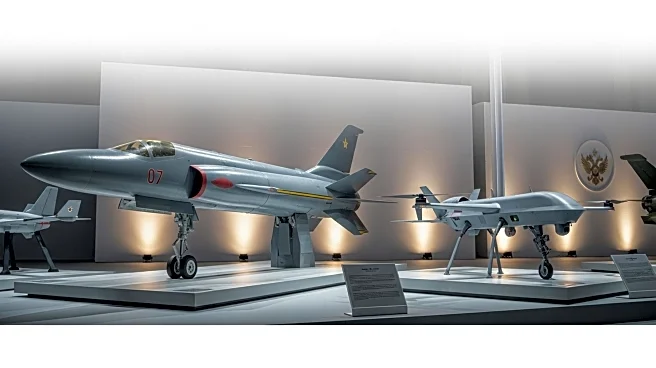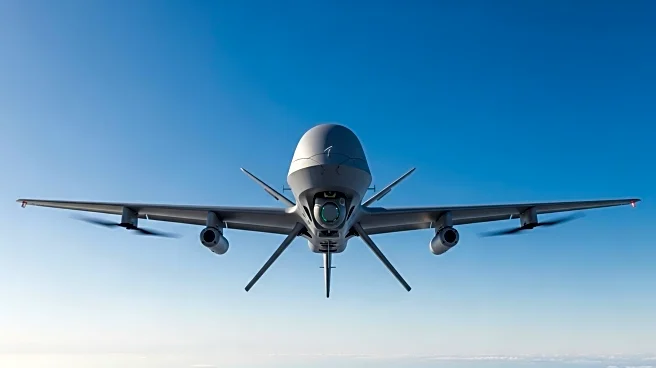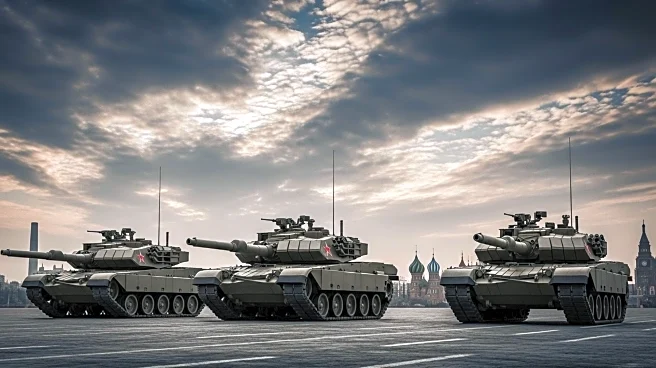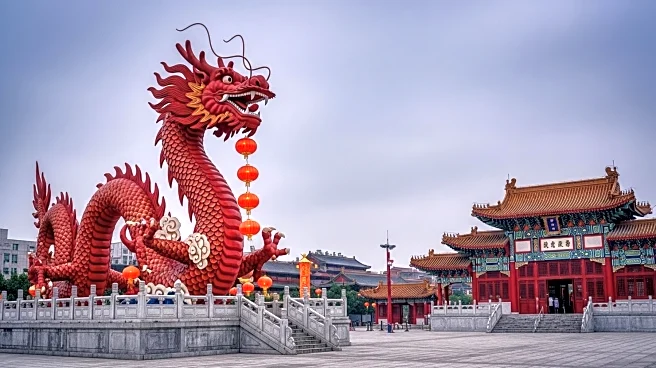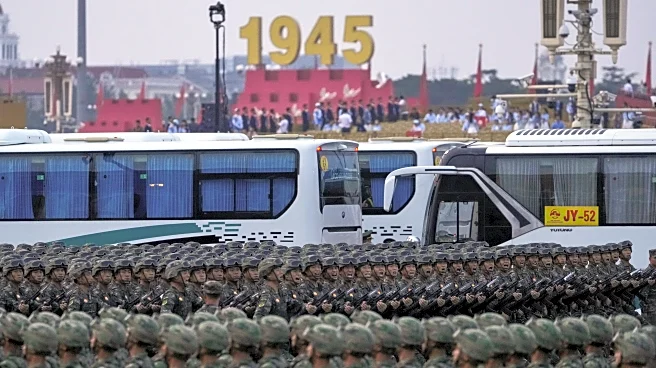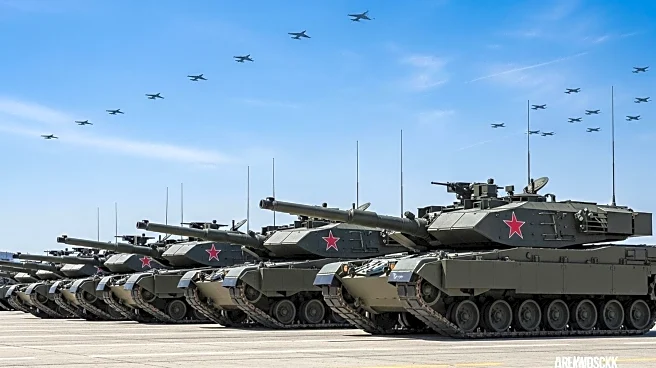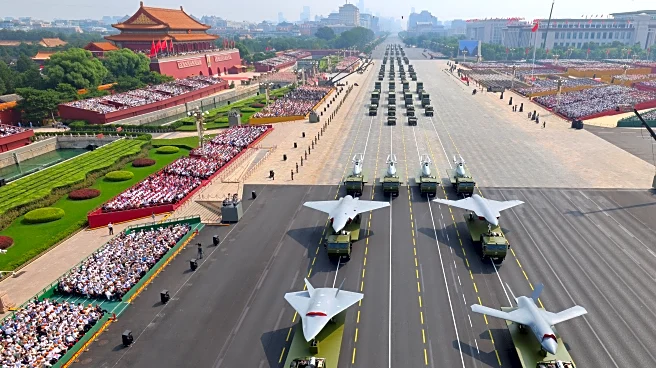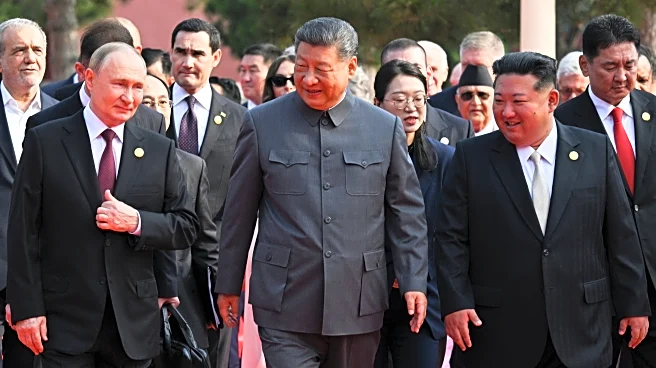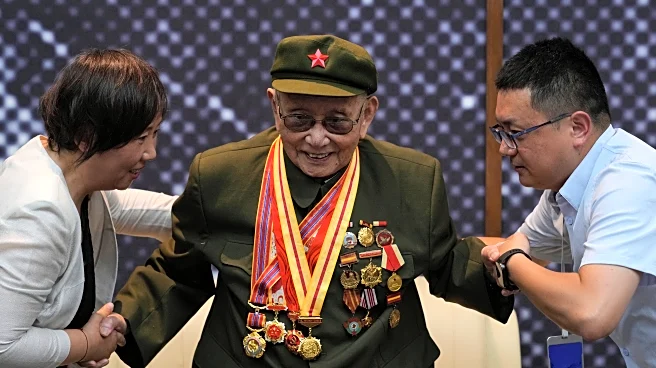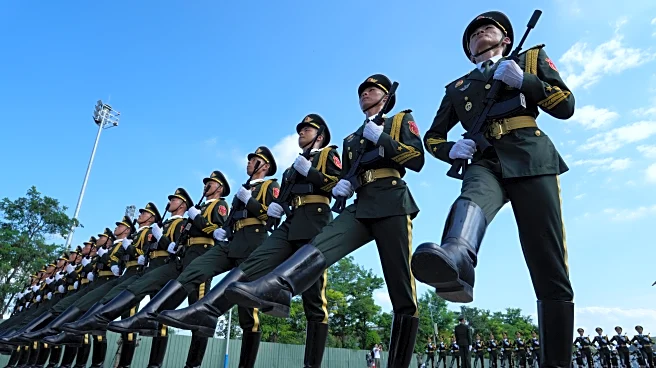What's Happening?
China held a military parade in Beijing, showcasing its latest military hardware, including new missiles, drones, and other high-tech equipment. The event marked the 80th anniversary of the end of World War II and was attended by several world leaders, including Russia's Vladimir Putin and North Korea's Kim Jong Un. The parade featured China's strategic nuclear forces, including the DF-61 intercontinental ballistic missile and the DF-5C silo-based missile, both capable of carrying multiple warheads. Additionally, new anti-ship missiles and reconnaissance drones were displayed, emphasizing China's focus on modernizing its military capabilities.
Why It's Important?
The parade underscores China's growing military capabilities and its strategic focus on countering U.S. naval superiority in the Asia-Pacific region. The display of advanced weaponry, including hypersonic missiles and drone technology, signals China's intent to project power globally and deter potential conflicts. This development is significant for U.S. defense strategy, as it challenges American naval dominance and raises concerns about regional security, particularly regarding Taiwan. The modernization of China's military forces could shift the balance of power in the region, affecting U.S. alliances and defense policies.
What's Next?
China's continued military advancements are likely to prompt strategic responses from the U.S. and its allies, potentially leading to increased military presence and cooperation in the Asia-Pacific region. The U.S. may need to reassess its defense strategies and capabilities to address the growing threat posed by China's military modernization. Diplomatic efforts to manage tensions and prevent conflict in the region could become more critical, as China seeks to assert its influence and protect its national interests.
Beyond the Headlines
China's military parade not only highlights its technological advancements but also reflects its geopolitical ambitions and desire to challenge U.S. influence. The event serves as a reminder of the complex dynamics in the region, where military power plays a crucial role in shaping international relations. The presence of leaders like Putin and Kim Jong Un at the parade indicates potential shifts in alliances and partnerships, which could have long-term implications for global security and stability.
